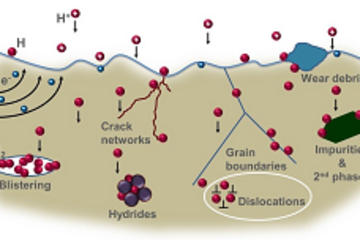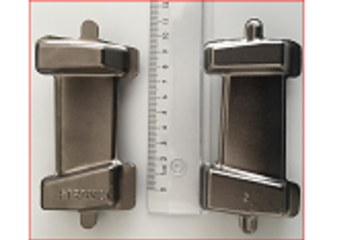All genres
401.
Talk
Phase fraction and texture quantification of Al-TRIP steel from EBSD data. 14th Workshop (GLADD), UGent-KUL-RWTH-MPIE-TUDelft, Aachen, Germany (2009)
402.
Talk
Phase fraction and texture quantification of Al-TRIP steel from EBSD data. 3rd Int. Conf. On Texture and Anisotropy of Polycrystals (ITAP-3), Göttingen, Germany (2009)
403.
Talk
Microstructural and micromechanical assessment of damage nucleation in a low-alloyed TRIP Steel. 3rd International Conference on Texture and Anisotropy of Polycrystals ITAP-3, Göttingen, Germany (2009)
404.
Talk
Challenges of low-accelerating voltage electron backscatter diffraction. 3rd International Conference on Texture and Anisotropy of Polycrystals (ITAP-3), Göttingen, Germany (2009)
405.
Talk
3D-orientation microscopy using FIB–EBSD tomography: An overview on techniques, applications and limits. 158th ISIJ Meeting, Kyoto, Japan (2009)
406.
Talk
Crystal plasticity modeling for property extraction and the microstructure properties relation of intermetallic -TiAl nased alloys. 1st International Conference on Material Modelling (ICMM 1), Dortmund, Germany (2009)
407.
Talk
Investigation of damage mechanisms in Al-alloyed TRIP Steels. Euromat 2009, Glasgow, UK (2009)
408.
Talk
Effect of grain size and heterogeneous strain distribution on deformation twinning in a Fe–22Mn–0.6C TWIP steel. THERMEC 2009, Berlin, Germany (2009)
409.
Talk
Overview of the crystal plasticity finite element method. THERMEC 2009, Berlin, Germany (2009)
410.
Talk
3D-EBSD Investigation on Orientation Gradients and Geometrically Necessary Dislocations Induced by the Martensitic Phase Transformation in Ultrafine Grained Dual-Phase Steels. Interdisciplinary Symposium on 3D Microscopy, Interlaken, Switzerland (2009)
411.
Talk
3D tomographic EBSD characterization of crystal topology in a CuZr alloy processed by equal channel angular pressing. Interdisciplinary Symposium on 3D Microscopy, Interlaken, Switzerland (2009)
412.
Talk
3D orientation microscopy by EBSD-FIB tomography: What can be done, what can't? AGH - ZEISS Workshop on Focused Ion Beam techniques, Krakow, Poland (2009)
413.
Talk
Effect of step size and scanned area on phase fraction and texture quantification from EBSD data. DGM-DVM, EBSD-Workshop 2009, Mikrostrukturuntersuchungen im REM, Chemnitz, Germany (2009)
414.
Talk
Untersuchung der Schädigungsinitiierung in einem Aluminium legierten TRIP Stahl. EBSD-Workshop 2009, Chemnitz, Germany (2009)
415.
Talk
Towards ultrahigh resolution EBSD by use of low accelerating voltage. EBSD-Workshop 2009, Chemnitz, Germany (2009)
416.
Talk
3D-orientation microscopy using FIB–EBSD tomography: An overview on techniques, applications and limits. EMAS 2009, Gdańsk, Poland (2009)
417.
Talk
Quantitative electron channelling contrast imaging: A promising tool for the study of dislocation structures in SEM. Electron Backscatter Diffraction Meeting, Swansea, UK (2009)
418.
Talk
Towards ultrahigh resolution EBSD by use of low accelerating voltage. EBSD 2009 Meeting, University of Swansea, Wales, UK (2009)
419.
Talk
3D EBSD analysis of mechanical size effects during indentation: EBSD tomography and crystal plasticity FEM. PLASTICITY 2009, St Thomas, Virgin Islands, USA (2009)
420.
Talk
Experimental investigation of geometrically necessary dislocations beneath small indents of different depths using EBSD tomography. MRS 2009 Fall Meeting, Boston, MA, USA (2009)








